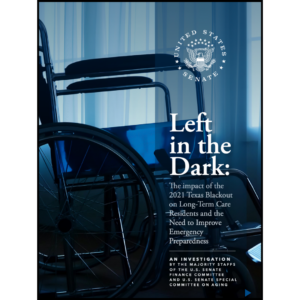Fire and ice
Update: As of January 30, 21 people have been confirmed dead. Eleven are still unaccounted for.
All was calm on Jan. 23, when the residents of the Canadian Residence du Havre senior facility went to bed. Then a fire broke out after midnight and quickly engulfed the older parts of the building, which weren’t outfitted with the same fire-fighting components as the newer parts were.
The fire raged quickly through the building, according to a residence home staffer quoted by the Toronto Sun on Jan. 25. By Monday, Jan. 27, local news outlets reported 14 people dead, with at least 18 people still unaccounted for.
The ongoing search efforts for victims were hampered by the –30 F wind chill, and the fact that firefighting efforts had left the site encased in 24 inches of ice. (Did you ever think about how the fire-saving efforts might inadvertently trap your residents?)
Yes; back in May 2013, Canadian health ministers had wisely put in place a mandate to require ALL senior living sites to have fire sprinklers and other safety measures in place, with a 5-year compliance period. You know, a lot like the current U.S. law.
Alas, those new fire safety laws may have not been required soon enough for this senior residence. This facility had partially met compliance already—the newer parts of the facility, built in 2002, were totally up to code and outfitted with the required fire safety stuff. But the older parts, reportedly built in 1997, apparently were not.
And so this tiny town of 1,500 will mourn its dead, while knowing it will now serve as an unfortunate example to the Canadian Health Ministry—and to all of us, everywhere. The town of Isle-Verte, which is just north of Maine, is a place where every family living there probably knew someone who lived at this senior facility. Many residents of which are dead now.
Many other questions (that we might learn from) surface, albeit from rumors via local news sources:
One Toronto newspaper reports that a single staffer was on duty that night, and that while this person was charged with resident monitoring duties, this person also was asked to prepare the lunch for the next day (Hint of task-responsibility overload here?)
Other rumors circulate that a resident had been denied an outdoors cigarette break, since it was after-hours. Some Canadian newspapers have reported that an unnamed staffer suggested the fire had started near this resident’s room, but the local police remind us all not to make assumptions—since the investigation is still ongoing and the official cause of the fire may not be determined for weeks.
Yet I wonder about other things: Why was only one staffer onshift to handle all crises that night? Also, why did this fire spread so rapidly? Apparently, according to local reports, the emergency crews arrived in good speed—so why so many deaths?
And, what are the lessons for us?
In short, it's far too easy to say, "Oh, that news is about Canada." Because if we ignore this tragic lesson, we're being really, really vacuous and dumb.
So here’s my take-home message:
Is your facility one that has extended time to comply with the U.S.-mandated fire safety regs? If so, please don’t wait out your given time. Just do the necessary fire safety upgrades now.
And please FORCE all your employees to practice those fire safety protocols written in your emergency planning book… at least once a month. So they’ll always be ready, just in case. You know, just in case they're the only person left on shift after midnight, etc.
Because as an editor and journalist, I really, really don’t want to have to write the next tragic news story about your facility.
Related news stories:
Death toll rises in Quebec nursing home blaze; officials question sprinkler laws
Death toll continues to climb in Canadian nursing home fire
CMS offers temporary fire sprinkler citation fix

Pamela Tabar was editor-in-chief of I Advance Senior Care from 2013-2018. She has worked as a writer and editor for healthcare business media since 1998, including as News Editor of Healthcare Informatics. She has a master’s degree in journalism from Kent State University and a master’s degree in English from the University of York, England.
Related Articles
Topics: Disaster Preparedness , Executive Leadership , Facility management , Leadership , Risk Management











